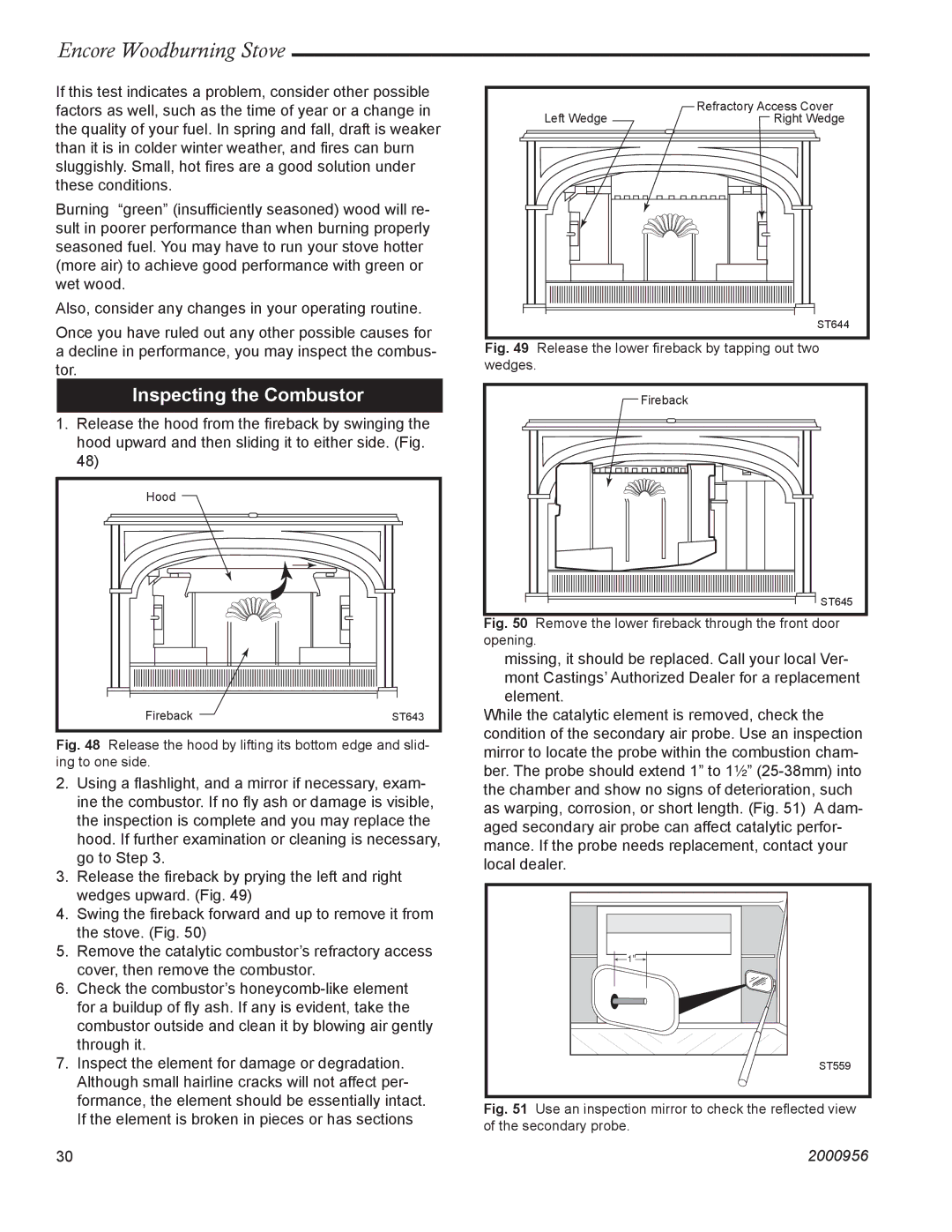
Encore Woodburning Stove
If this test indicates a problem, consider other possible factors as well, such as the time of year or a change in the quality of your fuel. In spring and fall, draft is weaker than it is in colder winter weather, and fires can burn sluggishly. Small, hot fires are a good solution under these conditions.
Burning “green” (insufficiently seasoned) wood will re- sult in poorer performance than when burning properly seasoned fuel. You may have to run your stove hotter (more air) to achieve good performance with green or wet wood.
Also, consider any changes in your operating routine.
Once you have ruled out any other possible causes for a decline in performance, you may inspect the combus- tor.
Inspecting the Combustor
1.Release the hood from the fireback by swinging the hood upward and then sliding it to either side. (Fig. 48)
Hood |
|
Fireback | ST643 |
Fig. 48 Release the hood by lifting its bottom edge and slid- ing to one side.
2.Using a flashlight, and a mirror if necessary, exam- ine the combustor. If no fly ash or damage is visible, the inspection is complete and you may replace the hood. If further examination or cleaning is necessary, go to Step 3.
3.Release the fireback by prying the left and right wedges upward. (Fig. 49)
4.Swing the fireback forward and up to remove it from the stove. (Fig. 50)
5.Remove the catalytic combustor’s refractory access cover, then remove the combustor.
6.Check the combustor’s
7.Inspect the element for damage or degradation. Although small hairline cracks will not affect per- formance, the element should be essentially intact. If the element is broken in pieces or has sections
|
| Refractory Access Cover |
| Left Wedge | Right Wedge |
|
| ST644 |
Fig. 49 | Release the lower fireback by tapping out two | |
wedges. |
|
|
|
| Fireback |
ST645 |
Fig. 50 Remove the lower fireback through the front door opening.
missing, it should be replaced. Call your local Ver- mont Castings’ Authorized Dealer for a replacement element.
While the catalytic element is removed, check the condition of the secondary air probe. Use an inspection mirror to locate the probe within the combustion cham- ber. The probe should extend 1” to 1¹⁄₂”
1" |
ST559
Fig. 51 Use an inspection mirror to check the reflected view of the secondary probe.
30 | 2000956 |
